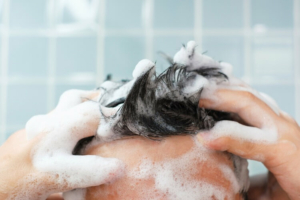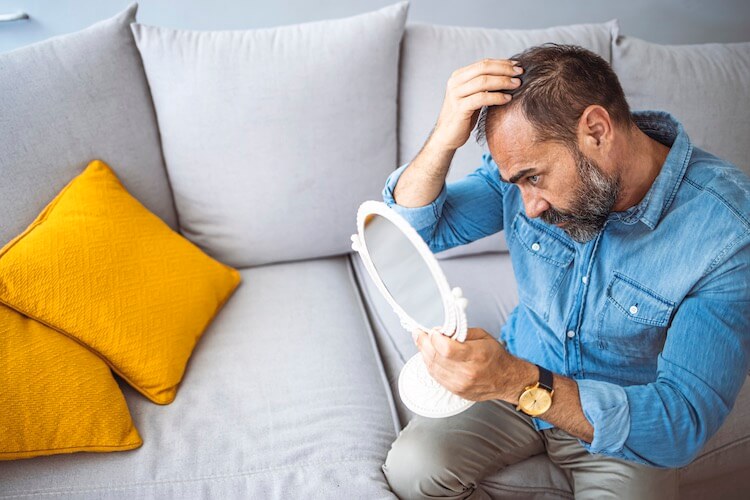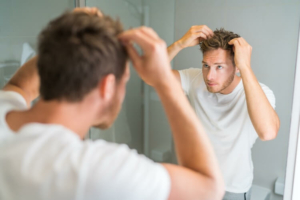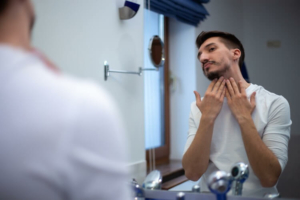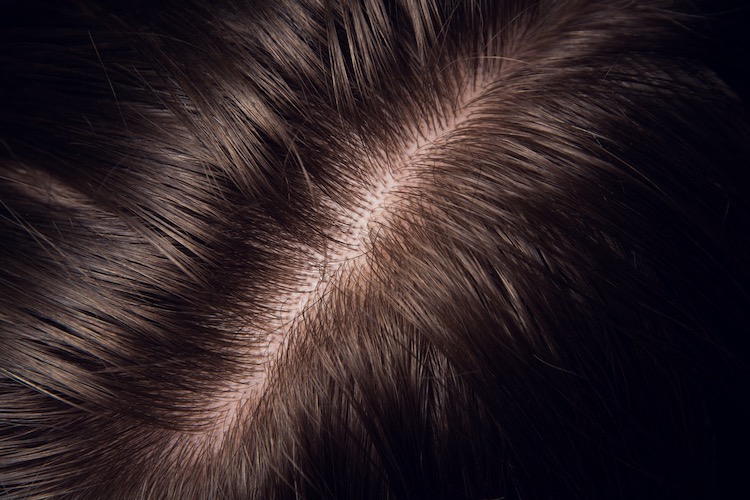Is Scalp Inflammation Causing Your Hair Loss?
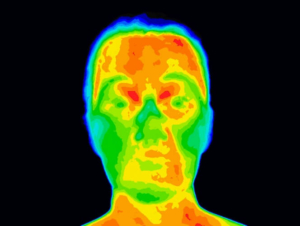
Why? That’s the first question many people have when they realize they’re losing their hair. It’s a perfectly logical question. Unless you experience alopecia, you don’t have a reason to research the cause. After all, who expects to see their hairline receding or their part getting progressively wider?
The truth is that there are many reasons why you can experience alopecia. Genetics and autoimmune disease top the list. However, people often blame inflammation for their hair loss. It’s a natural connection given all the recent press. Inflammation is linked to a countless number of medical conditions. Everything from heart disease to skin issues seems to be associated. All hair loss isn’t caused by inflammation, though. So, how do you know whether scalp inflammation is at the root of your hair loss? Read on. We’ll help you understand what conditions can cause inflammation on your scalp and how hair loss from inflammation differs from other types of alopecia. We’ll also share the latest options for treating and preventing hair loss caused by scalp inflammation.
What is Scalp Inflammation?
If your scalp is red, itchy, or burns, it’s possible that inflammation is to blame. But, what exactly does it mean when your scalp is inflamed? Inflammation isn’t a stand-alone diagnosis, it’s triggered by a specific condition such as an infection, alopecia, or an allergic reaction. It’s not random. Uncontrolled inflammation does, however, contribute to hair loss. It’s important to identify the condition causing the inflammation so you can stop any resulting hair loss and stimulate regrowth.
What Causes Inflammation on Your Scalp?
If you’re experiencing scalp inflammation, one of many different conditions may be to blame. Dermatitis, autoimmune conditions, infections, and alopecia are just a few. Here’s what you need to know about them.
Dermatitis
Contact Dermatitis
Contact dermatitis is a rash caused by an allergic reaction to a substance such as a particular shampoo, conditioner, gel, or hair spray. The rash appears within days after you’ve been exposed. Not much treatment is necessary to get rid of the rash. It usually clears up on its own within two to four weeks if you stop using the substance that causes the reaction. Over-the-counter antihistamines and topical cortisone creams can help expedite the process.
Seborrheic Dermatitis
You have probably heard of cradle cap, a condition that infants often experience. It causes scaly, crusty patches on their heads. You may be surprised to learn that adults get it too. Only it has fancier names and is called seborrheic dermatitis, dandruff, seborrheic eczema, or seborrheic psoriasis. Adults with seborrheic dermatitis experience redness, scaly patches, and thick dandruff. The condition is unpredictable. Sometimes it disappears without treatment. If it doesn’t, you can use a special shampoo to reduce the build-up of dead skin and reduce oiliness. Unfortunately, seborrheic dermatitis can also flare up without warning, so you may need to treat the condition more than once.
Autoimmune Conditions
Discoid Lupus Erythematosus (DLE)
Discoid lupus is a rare autoimmune condition that primarily affects women and often runs in families. The condition causes red, scaly, crusty patches. The patches are distinctive because the center is lighter in color and the rim darker than the rest of the surrounding skin. If your dermatologist suspects you have DLE, he or she will take a biopsy to confirm the diagnosis. Treatment ranges from cortisone to prescription medications depending upon symptoms and severity.
Folliculitis Keloidalis
Folliculitis keloidalis is a chronic inflammation of the hair follicles. People with the condition usually get red, itchy bumps that worsen over time. Although the exact cause is unknown, some believe it could be an immune reaction, irritation from close shaves or helmets, or androgen sensitivity. Depending upon the severity, steroids, antibiotics, and retinoids are prescribed.
Infections
Scalp Ringworm (Tinea Capitis)
Ringworm of the scalp is a contagious fungal infection that causes scaly bald patches that itch. Fun fact: no worm is involved. Ringworm got its name because it has a circular appearance. Oral medication and medicated shampoos kill the fungus and prevent the spread of the infection.
Bacterial Folliculitis
Staph bacteria live on your skin all the time, but when they infect your hair follicles, itchy, white, pus-filled bumps can occur. This is called bacterial folliculitis. Fortunately, this condition is easily treated with topical antibiotic creams, lotions, or gels.
Scarring Alopecia
Central Centrifugal Cicatricial Alopecia (CCCA)
Central Centrifugal Cicatricial Alopecia is a type of scarring alopecia. Although it can affect anyone, middle-aged women and women of color are most commonly diagnosed. Diagnosis is typically based on biopsy results, clinical features, and exclusion of other types of hair loss. Early diagnosis is critical to minimizing hair loss.
Lichen Planopilaris
Lichen planopilaris is a form of scarring alopecia that mostly affects middle-aged women. People with this type of alopecia notice their hair thinning and often experience scalp itching or tenderness. Lichen planopilaris can affect the hair line with frontal fibrosing alopecia, or along the part line. As with any type of alopecia, early diagnosis will help prevent further hair loss.
How to Treat Scalp Inflammation
Medications available to treat scalp inflammation are used for different purposes. Some are even the same as what is used for alopecia which is not inflammatory. Some examples of commonly used medications include:
Medications to Treat Inflammation
- Cortisone – Reduces swelling, itching, and redness
- Clobetesol – Topical steroid that treats swelling and itching. Stronger than topical cortisone. May be combined with antibiotics and / or antifungal medication.
- Retinoids – A synthetic version of Vitamin A that reduces irritation on the scalp and improves absorption of other medications
Medications to Treat Infections
- Antibiotics – Treat bacterial infections
- Nystatin – An antifungal medication
Medications to Treat Autoimmune Flares
- Plaquenil – An malaria medication used off-label to treat Lupus, arthritis, and other autoimmune-related inflammatory conditions
- JAK inhibitors – Janus kinase (JAK) inhibitor baricitinib is a newer class of medications recently FDA approved to treat alopecia areata and some types of scarring alopecia. The medications work by blocking the body’s inflammatory response.
Medications for Hair Regrowth
- Minoxidil (Rogaine) – A vasodilator that enlarges the hair follicles to allow for new growth.
- Finasteride (Propecia) – A DHT blocker that has been proven to generate hair regrowth and reduce atrophy in patients with Lichen Planopilaris.
It’s important to note that self-medicating for scalp inflammation is never a good idea. Medications for inflammatory conditions causing hair loss, whether prescription or over-the-counter, should only be used under the supervision of a licensed dermatologist.
Does Diet Help Treat Scalp Inflammation?
Diets designed to eliminate scalp inflammation have gotten a lot of recent media coverage. Do they work? The jury is out. One research study found that the Mediterranean diet, and diet rich in protein and soy may be a potential adjunct treatment for nonscarring alopecia. The study warrants further exploration. (01) Anecdotally, people have found the Auto Immune Protocol (AIP) diet to help control burning and itching associated with inflammation. There isn’t much research to support the theory. There isn’t a downside to trying a diet, as long as you are getting plenty of protein and all of the necessary nutrients. In our opinion, it’s worth a try.
Are Vitamins and Supplements as Effective as Prescription Medications for Treating Inflammation?
Many vitamins have a reputation for alleviating inflammation. Turmeric, Vitamin B3, Vitamin E, and other vitamins are known for reducing inflammation without any adverse side effects. One research study found that turmeric tonic significantly improved scalp psoriasis by reducing redness, scaling, and thickness. (02)
In some cases, vitamins or supplements may work on their own. In other cases, they may work as an adjunct therapy to prescription medications. The key is to ensure that you’re using the proper vitamin to treat the scalp condition you are experiencing. If you are interested in trying vitamins as part of your treatment protocol, but your dermatologist doesn’t mention them, be sure to raise the topic. Your dermatologist can tell you if vitamins or supplements are a good option for you.
Temporary or long-term scalp inflammation can be uncomfortable. Consulting with a dermatologist will help you get it under control as quickly as possible to alleviate your symptoms and prevent hair loss. If you are looking for hair regrowth solutions, our board-certified dermatologists and hair specialists are here to help. We’re happy to answer your questions and make recommendations based on your diagnosis and needs.
Resources:
(01) https://www.ncbi.nlm.nih.gov/pmc/articles/PMC7109385/
(02) https://pubmed.ncbi.nlm.nih.gov/29607625/

